Deck stain
I did a search to get ideas about brands. What I seemed to come up with is a bunch of hound dogs either tooting their own company horn or dissing the competition.
So please I'd like to hear from some of the paint guys and gals that are regulars, because I trust y'all, and I don't trust what I've been reading otherwise.
I want a tinted semitransparent oil. What brand do you suggest?
Thank you.
Comments (44)
Faron79
12 years agolast modified: 9 years agoBefore talking BRANDS...what kinda deck do ya have?
Its age, height off ground, sun exposure, any sanding done, etc....
Faron
lucillle
Original Author12 years agolast modified: 9 years agoFaron, looks like pressure treated wood, part maybe 9 inches off the ground, second part more, maybe 16 inches off the ground. Have not prepped at all yet (am working on painting the house) but have sander and pressure washer. Water is not beading so I do not know when it was sealed prior. I do not know the deck age, the house was built in '40 and I just purchased it a few months ago.
There is a large oak so not full sun but not full shade either.Related Professionals
Canton Painters · Caldwell Painters · Chico Painters · Louisville Painters · Newton Painters · North Bethesda Painters · Shelton Painters · Springfield Painters · Klahanie Painters · Kailua Painters · Brea Cabinets & Cabinetry · Dedham Flooring Contractors · Mill Valley Flooring Contractors · Norfolk Flooring Contractors · Valencia Flooring ContractorsJumpilotmdm
12 years agolast modified: 9 years agoCabot all the way. bought by Valspar a few years ago but guts of company still alive and well in Mass.
Be sure to follow the label directions as it is real easy to put too much on.
Their decking stain is heavily pigmented and more like a semi-solid so consider a site-mixed in "natural" if you really want a semi-transparent look.
be careful about the sanding. It can change the porosity in the sanded places and affect the color greatly. i recommend a sample spot.lucillle
Original Author12 years agolast modified: 9 years agoThank you. Could you please tell me about resealing, next year if I use the same stain do I have to (please Lord no) completely remove this year's stain?
I think I will have to do this at least every year because I have 4 dogs who run around on the deck.paintguy22
12 years agolast modified: 9 years agoI still think Sikkens is leading the way in deck stains and finishes.
Faron79
12 years agolast modified: 9 years agoI'm a Sikkens fan too!
>>> You CAN'T get by just cleaning & staining with NO other work though...
>>> At some point, sanding HAS to be done!In case no one believes I've sanded ALL my spindles...that's why they look so DULL in these 2 pics!
These were taken in Summer-2008 I think, cuz our DD graduated HS the following year. They're mainly to prove I've sanded everything!! In these pics, I just sanded the steps in place. In 2005, I had taken them completely off, and ran them thru a planer.
Last year (2011), I took some steps off to sand them again, and discovered some "soft" wood on the top of one stringer..&^$%*#^%#$^%#$%!
Soooooo...off came the rest of the steps, the descending handrail/spindles, & the outer big Redwood 2x12 skirt-board. Had to have a new stringer cut...@#&^*%&^*#@.Keep in mind you're lookin' at 12 y/o "Construction-Heart" grade Redwood here! This is on the WEST side, NO shade. This year will be the decks' 16th year!
Faron
lucillle
Original Author12 years agolast modified: 9 years agoFaron, the deck is gorgeous, the dog is gorgeous, the house is gorgeous.
I got to sand every few years?lucillle
Original Author12 years agolast modified: 9 years agoHow come they discontinued that Sikkens solid Dek stuff?
Faron79
12 years agolast modified: 9 years agoLucille-
Thank you for your kind note!
Sikkens dropped the Solid OIL-only stuff a couple years ago.
Now it's a "Hybrid" formula called Rubbol Solid DEK.
VOC-regs don'cha know!There are tint-bases for it too though.
Where I work, we go thru LOTS of Sikkens, and Penofin.BUT-
It don't mean squat if you don't do periodic maintenance.
What I've learned over the years (ON MY OWN DECK), and observing other decks, researching issues, etc....is that sanding periodically is the ONLY way to keep even color on a deck. ESPECIALLY on the horizontal surfaces.
* I've sanded those steps of mine THREE times in 16 years.
* They've been completely removed TWICE.
* THAT'S why they look brand new.
* Deck floor itself has been sanded twice, and I'll sand IT for the 3rd time next year.
* Stain only helps....to a point.
* Goofy labor-of-Love...!??!? YES. But it's fairly valuable wood on that thing! You CAN'T BUY that kind of wood anymore...without a 2nd mortgage anyway!
* So yeah....I'm gonna fight like hell to keep her lookin' good!I removed my handrails last year too, and gave them 2 coats of DEK-Finish (Semi-transp.), in #045 Mahogany. The year b4, I sanded-down/disassembled a swinging bench my FIL made in the mid-90's, and gave that the same stuff.
DEK-Finish is the sheened stain, unlike SRD.Faron
deckdude2
12 years agolast modified: 9 years agoTWP 100 Series if you can get it. If not the 1500 Series is just as good. Both are far superior to Sikkens and Cabot products when it comes to longevity and ease of re applying down the road in a few years.
Here is a link that might be useful: TWP 100 Series
Faron79
12 years agolast modified: 9 years agoI've looked at that stuff before.
The ingredient list is THE SAME type of ingredients in many deck stains out there.
Penofin has been highlighting their "Trans-Oxide Pigments" and "Brazilian Rosewood" Oils for WELL over a DECADE, for example.
I just roll my eyes when people say bunk like...."It's far superior to blah-blah-blah....". I've been around the industry & products long enough now to know that if you haven't sanded a deck (or WHATEVER....) in 10 years, you're just wasting your time.
How is one stain "Easier to apply" years down the road anyway?!?!?
What does THAT mean?!?!?(see where I'm goin' with claims like this...;-))
Faron
lucillle
Original Author12 years agolast modified: 9 years agoDeckdude no offense but I started this thread because it seems like when someone asks about the best product people one has never seen magically appear and endorse one product or another, so I wanted to hear from regulars here. Having read Faron's posts for a number of years and read good advice from him, I trust what he says. And you notice that prior to talking about any brands he asked for info and talked about prep. I feel like I can go by what he says.
deckdude2
12 years agolast modified: 9 years agoFaron-
Sanding is actually the wrong way to prep a deck for stain. When you sand a deck it "closes" the pores of the wood. This makes it more difficult for the stain to properly penetrate into the wood. If the stain does not penetrate correctly it will film and dry on top of the wood instead of "in" the wood. This can result in premature failure or peeling. The better a stain penetrates, the better it will perform.
"Easier to reapply" - All stains will eventually fail. It is easier to clean and re coat stains a few years down the road when they:
1. Have not peeled or worn unevenly.
2. Have not darkened or turned black in color (i.e. Penofin, SuperDeck, Sikkens) but rather faded lightly like TWP does.
3. Have not attracted mold or mildew. Linseed oil is one of the main ingredients in decking stains. Linseed oil attracts mold, mildew. TWP does not contain linseed oil.It is easy to "roll my eyes" at your comments at is obvious that you are limited in your experience with decking stains. Do some research on the internet and you will see that their is a huge difference in performance and not all stains have THE SAME type of ingredients.
Below is a link to a contractor forum site that specializes in wood restoration. These contractors have far more experience and as you will see from the poll, sikkens is rarely used.
Here is a link that might be useful: Deck Stain Poll
deckdude2
12 years agolast modified: 9 years agoLucille,
You asked for a suggestion on a brand and I gave one. I am not affiliated with TWP, just have been restoring decks for 10+ years.
I really did not appreciate Faron attacking my post when all I was trying to do was suggest a product based on my experience.
paintguy22
12 years agolast modified: 9 years agoCome on deckdude....only 22 people voted in that poll!
I think we need a better sample.
This is really the same thing we hear anyway and it shall always be like this. Ask on a forom what the best product to use for anything is and you will get a million different opinions. It is true though on a deck that maintenance is the key and it seems to me that about 1 percent of homeowners maintain their decks. They all wait until the finish is gone or peeling beyond recognition until they address it.
lucillle
Original Author12 years agolast modified: 9 years ago" Ask on a forom what the best product to use for anything is and you will get a million different opinions." Exactly, and that is why I posted here.
There are some people here that have given consistently good opinions for years, taken their time with posters who can't possibly benefit them, and their advice has been detailed and judging from feedback over the years, good advice.
I did a search prior to my post on this forum and I came up with a million different opinions and lots of backbiting, negative comments and really did not end up confident that I knew what to do even after considerable reading. So I came here and I'm glad I did.
deckdude2
12 years agolast modified: 9 years agoPaintguy-
New poll for this year. Feel free to read the last few years polls.
Here is a link that might be useful: Stain Poll 2009
deckdude2
12 years agolast modified: 9 years agoLucille,
I agree that Farons deck looks great in the picture. But Sikkens does have issues and it is with reapplication. It is a heavier bodied penetrating stain that has a tendency to peel, wear unevenly, attract mold, and darken in color after a few years.
This is why the majority of contractors will not use it.
How about this for an unbiased review of Sikkens.
Here is a link that might be useful: Sikkens SRD Review
jessicaml
12 years agolast modified: 9 years agoOur Cabot rep told me their Australian Timber Oil is comparable to Sikkens (beautiful look for wood in good shape). Customer input varies between loving Penofin & Cabot, and asking if we can get Sikkens. Generally for longer wear between re-staining, a semi-transparent or semi-solid is a safe bet, though you lose much of the beauty of the wood. Can't say I have as much personal experience as Faron, though! I leave that to my husband, and the last time he stained our deck he left it half done...
Faron79
12 years agolast modified: 9 years agoHow's it goin' Deckdude!
Regarding Sanding-
* In various Sikkens training manuals, contractor inputs over the years, U.S. Forestry-Service grain studies, etc., sanding IS the best prep.
* We DID press Cabot a couple times on some peeling issues customers' had, and they eventually said that, yes...sanding would've helped.
* I'm not sure where the myth of sanding "closes" woods' pores started...it's just flat-out WRONG.
* If you're sanding with 220....YES...the grain gets polished and nothing will penetrate.
* I sand with SIXTY-grit. EIGHTY-grit for smoother-feeling furniture. NO higher grit than that.
* Sanding shears-off the COMPRESSED, UV-degraded wood fibers that stain can't penetrate anymore. DOESN'T MATTER how clean that kind of surface is, OR what kind of stain is used. ANY stain will peel and wear poorly on wood that's never been sanded.
* It's the main reason traffic-paths look differently, and peel faster. The grain is so compressed, that nothing will penetrate. Most of the stain dries on top.
* Because I sand with 60 & 80-grit occasionally, the cellulose & lignin fibers that are newly exposed aren't crushed-down!
* They're open and ready to....here's the whole mantra here....
>>>* ANY stain darkens over time!! It's called DIRT.
* If some stains are applied to heavily, and not wiped-down, their solvents flash-dry on top. Some dry very dark if not removed. Is it a stains' fault??? NO. Just too much product applied.
* Linseed Oil. Yes, used in lots of stains. Usually heavily modified however. It helps pull pigment into the wood.
* Linseed Oil by ITSELF, or in lesser stains IS mold-food.
* To ME, SRD is pretty thin. I wouldn't even remotely call it heavy-bodied.
* DEK-Finish, Log & Siding, the Cetol-1, & 23+ SHEENED coatings ARE fairly "syrupy" though. They're an entirely different animal than SRD.
* Ground-moisture issues are another major cause of peeling. Decks low to the ground, and/or skirted-in, are much more prone to mold/mildew and peeling.
* Some peeling issues are related to the product that's been used previously! Behr had SILICONE-treated stains for a few years! Some of Thompson's Water-Seal lines have Stearates/Waxes in them!GUESS what'll happen over those 2 products if not removed....
I'd better quit now!
Deckdude2-
I'm NOT trying to pick a fight or anything!
I'm just attacking the "Old Wives' tales" related to deck care. I have to choke back laughter when customers' say, "My neighbor said sanding was bad for a deck..."Uffda...
Faron
Faron79
12 years agolast modified: 9 years agoThat was quite a "review"!
They were complaining about SRD applied to a PINE DOCK!!
* Color-fade over 2 years???
Um...yeah...FULL sun in Tampa on a pine dock, barely off the water.
* Mold issues??
Kinda hard NOT to mold. Damn near ANYTHING would there!
* Wear-pattern down the middle???
Wow...that's shocking. That applies to 98% of decks and stains out there....
* They weren't pleased with "the application process", and "the stain dripping into the water..."
Again-Wow.
How do they expect the stain to be applied to a dock??!?!
Magic?!I'm not attacking you in any way here Deckdude...just this ridiculous review. I'd say the same things about this review even if TWP was what they were talking about!
Faron
deckdude2
12 years agolast modified: 9 years agoFaron-
I would say that 90% of you comments are false on the sanding and darkening (especially darkening). I could sit here and dispute them easily but really what is the point? You would just attack my comments (you say you are not but you are) and offer some rebuttal.
I will take the higher ground and leave it be, for now.
As for the review, your comments are very generalized. There are many reviews on the site for all different kinds of stains and products. If you read them you would see that all stains are not created equal when it comes to UV fading, mold, darkening, application, etc.
There is no perfect stain but there are for sure products that are better then others. Sikkens IMO is an over priced, average product and I am not the only contractor who feels that way.
Here is a link that might be useful: Contractor thread on sikkens vs twp
deckdude2
12 years agolast modified: 9 years agoHere is another.
Here is a link that might be useful: Sikkens issues
paintguy1
12 years agolast modified: 9 years agoThe "which is better debate" can go on forever but just remember a few things:
You get what you pay for.
All deck coatings will fail- generally, the more transparent they are, the quicker they go (the more opaque, the greater UV protection the underlying wood receives). Conversely, the more opaque they are, the more catastrophic the failure (that is, then a transparent stain fails, you can hardly tell, when a solid fails, it's way ugly).
Coarse sanding is always better - power washing tends to leave fine fibers (as described by Faron) that will take up stain but then quickly erode.
Alkyds (either solvent reduced or water reduced) are the best choices for less opaque finishes, latex is the best choice for semi-solid and solid stains (they are effectively thin paint and latex paint is the better choice than an oil outside)
Good luck.
lucillle
Original Author12 years agolast modified: 9 years agoDeckdude, in the contractor thread on sikkens vs two that you linked, one of the first posts is the site admin saying she likes both products. In both threads you linked there are positive comments on Sikkens.
deckdude2
12 years agolast modified: 9 years agoLucille-
But there are more negative. That is my point. I never said all but the majority of contractors will not use the stuff.
I am sure your deck will look great when done. The issues will arise in a year or two down the road. Darkening substantially (almost black), mold/mildew, and peeling will most likely happen.
To be fair, please post a picture in a couple of years to validate if this happened or not.
Faron79
12 years agolast modified: 9 years agoSounds like a plan Deckdude-
I've just never heard of anyone arguing AGAINST sanding...!
It just seems like you're ignoring the MANY possibilities of stain-failure, and overly focused on downgrading ONE brand.Yes, my comments are purposely general, because all decks are up against the same thing.
>>> For the remainder of this Forums' readers:
* We've sold more Sikkens every year here, for 10 years. Complaints...ummmm...maybe 2?!?!? Literally. We do hammer-home prep. regimens though!
* Again, Sikkens training manuals, and consumer literature directly state sanding is the best prep. They go into great detail on the UV-breakdown of cellulose & lignin, and how it greatly hinders a stains' absorption and wear.
* I also stated Cabot also stated this after we pressed them on a couple issues.
* A U.S. Forest-Service study a few years ago determined that horizontally-installed woods experienced a FIFTY PERCENT degradation of the surface cellulose & lignin fibers......>>
* Cleaning and/or stripping doesn't magically make these fibers whole again. They have to be removed. Mechanically. That means sanding.
* I've had MANY customers come back in and thank us for recommending sanding.
* Just because a person is a "Contractor", doesn't mean they know all phases of an operation. I've known painting contractors who take stunning shortcuts on projects. The first thing usually blamed?!??!....the paint.Faron
lucillle
Original Author12 years agolast modified: 9 years agoFaron how are deck stains different from others or can I use deck stain on a fence?
Thank you for your time.deckdude2
12 years agolast modified: 9 years agoFaron,
Just because a person works at at paint store does not make him an expert.
The issue I have with your comments is not that you offer good advice and help but rather you position yourself as an expert. You have knowledge but you severely lack in experience. Working on your personal deck and selling the few brands that you do hardly gives you hands on experience like an established contractor. With experience comes extensive knowledge of what works and does not work. You attack other people's comments (then say your are not) while trying to get other posters to agree with comments like "see where I'm goin' with claims like this...;-)".
I was not going to dispute your comments but here it goes:
Sanding (common sense here): Absolutely does close the pores of the wood. It does not matter if it is 200 or 60 grit. You will smooth the wood down either way. This will reduce the stain absorption. Of course 60 grit will do this less but it will still do this. In addition you will fill the voids with sand dust which can also reduce stain absorption. If you sand you should at the very least use a wood deck cleaner after the sanding to remove the sand dust and "open" back up the pores of the wood. You will then need to use a deck brightener to neutralize the cleaner and set your pH balance. Stains will always perform better when the pH balance of the wood is neutral or slightly acidic.
The best way to prep the deck is not with sanding but with the use of a deck cleaner (sodium percarbonate based) or a deck stain stripper (sodium hydroxide based) if needed. Both will remove the oxidized wood cells (or old stain) giving you a substrate that is prime and ready for a new stain. Neither will damage the lignin like bleach based products. You will need to scrub (mechanically) the cleaners to remove the damaged cells and rinse. You should not use a pressure washer at a high pressure but you can use it a very low pressure as a rinsing tool. Both cleaner and stain stripper must be neutralized with a wood brightener. Failure to do so will leave the wood in a high caustic state which will cause stain failure at a faster rate.
The key to deck stains longevity is preparation. As I mentioned before, the better the penetration, the better any stain will perform. Anything (sanding and sand dust for example) that reduces absorption of a semi-transparent stain can or will cause premature failure of the product as the stain may cure on top of the wood instead of in the wood. It does not matter if it is TWP, Sikkens, Cabots, etc.
Darkening after a few years: This is not related to dirt only. Darkening can happen for a variety of reasons.
Mold/Mildew: Many stains attract mold or mildew, some more so then others. In general oil based stains can "feed" the growth of mold due to the type of oils in the wood. The most popular being Linseed Oil which is found in the majority of oil based stains. The stain manufacturers combat this by adding mildewcides into their formulas. Eventually though the stain will break down resulting in the growth of mold spores. The quicker a stain fails the quicker the mold can form. TWP for example does not contain linseed oil but rather a blend of synthetic and natural oils.
BTW, TWP is the only exterior wood stain that is registered and approved by the EPA as a exterior wood preservative.
Trans-Oxides: Trans-oxides or Iron-oxides pigments are UV absorbers for wood. They help prolong the natural oxidation (graying) of the wood. Trans oxides can also result in darkening of the stain color when exposed to higher UV index or higher amounts of the trans-oxides in general.
Dirt/grime: Of course dirt and grime can darken the appearance. Some stains though are more prone to this. For example SuperDeck has a tendency to take a long time to fully cure. It may stay "tacky" for awhile where as dirt and grime will "stick" to the surface more so then a faster curing stain. In addition if applied during pollen season you will speed up the growth of potential mold as the pollen will attach to the stain while curing.
Compression: Your comments on this are correct but proper cleaning will alleviate this while power sanding can actually cause compression of the wood.
Traffic Patterns: Are not from compressed wood when the wood was prepped properly but rather from wearing down of the wood cells/stain from heavy use. Stains that dry on top of or nearer to the surface will show a wear pattern much quicker then a deep penetrating stain.
Sikkens SRD viscosity: If you opened up say 10 pails of the top oil-based wood stains you would see that Sikkens has a higher viscosity (thicker) then most. Most likely due to a higher amount of solids (trans-oxides). Thicker stains will penetrate slower or not as much. They will also have a tendency to darken (higher trans oxides) and wear faster (less absorption). This is not just related to Sikkens SRD but many other stains. Penofin for example has two versions of stains. Blue label (550 VOC) and a Red Label (250 VOC). the Blue Label (550) is a much thinner product and contains less trans oxides. The Red Label will darken considerably more then the Blue. I equate the Sikkens to the Red Label as they are both 250 VOC compliant (less solvents) and contain similar amount of solids. To be far they are both beautiful stains when applied properly. The issues arise down the road in a couple of years.
Faron Comment: "Cleaning and/or stripping doesn't magically make these fibers whole again"
You do not make wood fibers whole again but rather remove the damaged cells/fibers to a proper "sound" substrate. This can easily be accomplished with a deck cleaner and a little elbow grease. Much easier then sanding and can be more effective in the long run.
Faron, I can go on and on with this. Many of your comments have merit and I agree with you that preparation and not using shortcuts is the key. I respect your knowledge but you have substantially less real world experience.
I guess we can always agree to disagree but please do not ever label me is a "contractor who does not know all phases of operations". I can answer almost any question with experience someone has on deck restoration.
paintguy1
12 years agolast modified: 9 years agoAll good points but I think you are still missing the point about sanding. You speak of sanding creating a surface like mill glaze - and I suppose if you went at it with a high speed sander with a fine enough grit, you could indeed create a glaze, but this is not what is being recommended. In fact a course sanding is the cure for mill glaze. There is no other way to remove the loose fibers - certainly power washing doesn't do it - it actually creates them. It's probably less important with less opaque finishes since they move into the pores anyway but is critical with more opaque finishes since they bind with whatever is on the surface.
Faron79
12 years agolast modified: 9 years agoOK Deckdude-
I'll step off my soapbox!
Also...I'll just leave it that our sanding positions are "on 2 different shores"!My deck steps though-
* 10 years ago, before I knew much about Deck-care, those steps of mine looked like hell. Deck is now 16y/o.
* Down the center there was pronounced "grain-ridging", due to the uneven breakdown of the softer cellulose. People & dog traffic, and the sun-beatdown occuring.
* Stripping and cleaning did nothing for this STRUCTURAL change in the woods' surface.
* Therefore I took them off and had them planed-down. The guy doing the planing said he had to go down an 1/8" to get rid of the grooving!!
* I then sanded them with 80-grit to "unglaze" the wood. That occurs when the heat & pressure of heavy/fast planing blades create sort of a "seal" on the surface.
* Steps were then vacuumed off, wiped-down with paint-thinner rags, and FINALLY stained!I had new steps again!!!!
Smooth, and evenly colored steps with no grain-ridges!
Chemicals and strippers used since then....NONE.
Only the pictured Deck-wash.My expertise level??
I'd say pretty damn good!
NO...I haven't stained a hundred decks.
(I know...you didn't say or imply that. I'm just making a separate statement)
My own real-life deck has been a good experiment station!
BUT...we research LOTS of deck issues.
I've seen MANY 5-year old decks that look like Hell.
(I just smile to myself....;-))Faron
lucillle
Original Author11 years agolast modified: 9 years agoThere is noooooo question but that my deck is gonna get a GOOD sanding. I am not used to tall ladders, and a whole gallon of white trim fell 12 feet, splattering the newly painted siding. the windows, the dogs, and of course the deck :(
I spent 10 minute wiping up what I could, 10 minutes cussing silently, before I remembered this thread and remembered that I'd need to sand anyway.
If I am ever blessed to be a bit more affluent I would never pick up a fricken paint brush for the rest of my life.
I now have a piebald red hound.CaptRandy
11 years agolast modified: 9 years agoYou want a good semi oil product. Use either Ready Seal, Armstong Clark . That is what deck restorers use. Check to see on the Grime Scene.
http://www.thegrimescene.com/forums/wood-cleaning-restoration-decks-fences-etc/23298-2012-sealer-stain-poll-one-s-you-using-year.htmllucillle
Original Author11 years agolast modified: 9 years agoCaptRandy, thanks but I'm using Sikkens. There is just no substitute for recommendations from someone who has helped this forum for years, and just look at the picture, above, decks don't get any prettier than that.
I'm over the paint mishap btw:)CaptRandy
11 years agolast modified: 9 years agoGood luck with it. Just make sure you follow the maintenance procedures to the letter. Hope you do not ever have to strip it.
CaptRandy
11 years agolast modified: 9 years agoAm I the only one who is missing this finished deck with Sikkens? BTW you BETTER be sure there is no prior sealer on the deck or you my get a rude awakening.
Faron79
11 years agolast modified: 9 years agoCR does have a point here...
Some previous stains (if any) MAY contain waxes and/or silicones. Behr had a deck stain with silicone in it for a few years. Thompson's Water-Seal & some of their colored stains have waxes in them.
(We don't even stock Thompsons'....for a good reason!!!)
If these types of finishes are on a deck, strip and/or sand them out entirely.
Sikkens maintenance is no different than any other deck stain. They're largely at the mercy of "Mother Nature" and foot/paw-traffic. There's no "magic" stain out there...many people just get too caught-up in the latest ads & marketing.
Faron
CaptRandy
11 years agolast modified: 9 years agoAgree completely Faron. I have been cleaning and sealing decks for over 20 years and do about 250 per year. I have seen sealers come and go but a few are still available that are high performers. The main problems have been voc's that have changed formulations and a stain that was good for years suddenly fails in 6 months.
deRouche
11 years agolast modified: 9 years agoWell, I also researched deck stain. I have a HUGE redwood patio. All I know is I wanted to clean it then sand it so I could get close to the original color. I had redwood transparent stain from 2 different but well know companies. The redwood stain was not true red (new redwood is pinkish/red and white. I poured the cans together, added 3 gallons of mineral spirits and bright red and bright orange dye until it looked the color I wanted. I stained the deck twice. It looked pretty red at first, actually not that good. But a month later it looked better (lighter) and this year - it is beautiful. I'm thinking of putting another coat on this fall or next spring as I have 10 gallons left.
lucillle
Original Author11 years agolast modified: 9 years agoBecause of some health issues the deck never got stained, then it got to be winter, but I'm fixing to stain soon. Might be for the best, I am in the middle of building a picket fence on the sides and front of my little home and I'm going to stain that as well, all the same color. (I was going to paint, changed my mind).
I have two cents to put in here, though.
I went to various sites because I wanted to see some fences done in Sikkens SRD Teak. Didn't find them, but found something that was sort of offensive to me. It is a site that purports to rate stains but actually seems to be a disguised advertising site for a particular stain (not Sikkens).esox07 (4b) Wisconsin
11 years agolast modified: 9 years agoI had a deck built two years ago. It is about 2-3 feet off the ground and has skirting but skirting that allows a good deal of air flow. About two month after it was built, I put on Thompsons water Seal...yah, I know. I like the natural wood color and thought that would be all I need. I have since realized it offers little to no UV protection and after 1.5 summers and now two Wisconsin winters, the moisture resistance is mostly gone. I am looking to put on some regular stain this summer. I am NOT going to be sanding it. I have a bad back and just the staining will be about all I can handle.
Any suggestions and stain recommendations? I will probably be doing it in May or early June.Thanks,
Brucepauljo13
10 years agolast modified: 9 years agoNice looking deck!
After years of staining our deck we tried something different this spring called DeckREFORM. It is a coating that you apply to the floorboards with a color matched stain for the railings. We went with the brown, but there are several other colors as well. I was impressed with the texture and finish of the stain. I bought the stuff on amazon, but here is the website http://deckreform.com/
pauljo13
10 years agolast modified: 9 years agoNice looking deck!
After years of staining our deck we tried something different this spring called DeckREFORM. It is a coating that you apply to the floorboards with a color matched stain for the railings. We went with the brown, but there are several other colors as well. I was impressed with the texture and finish of the stain. I bought the stuff on amazon, but here is the website http://deckreform.com/
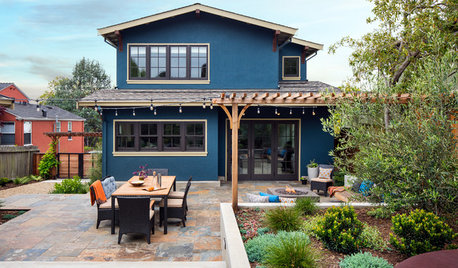
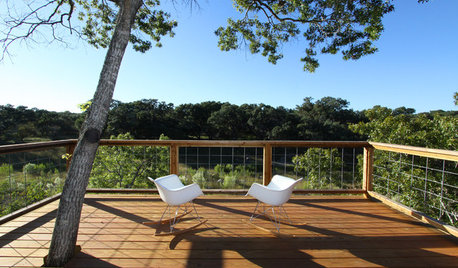
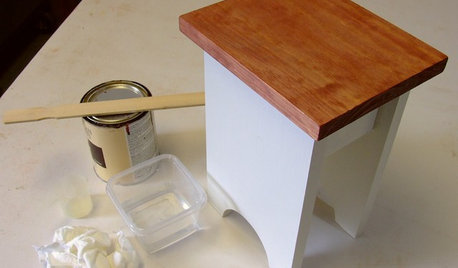
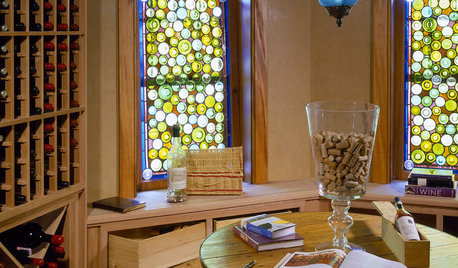

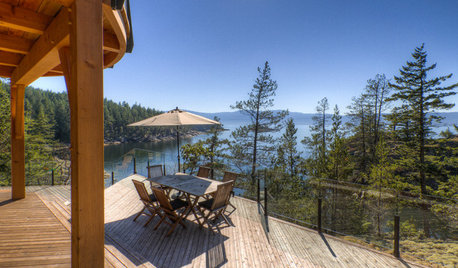

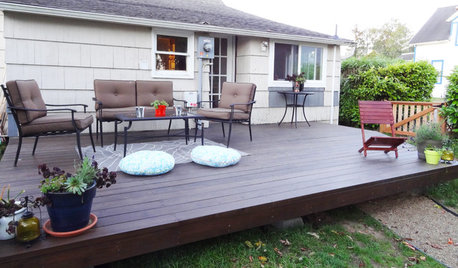
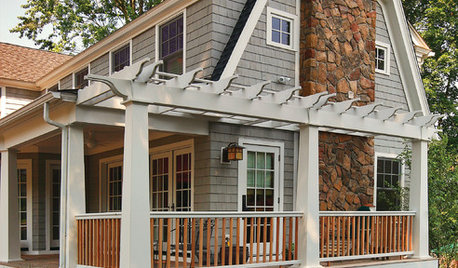







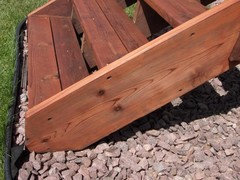
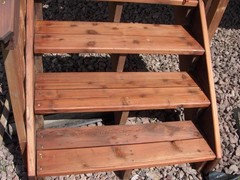
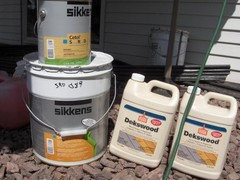
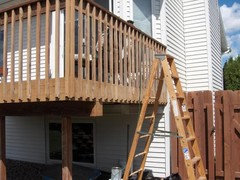
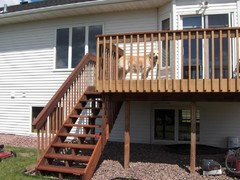
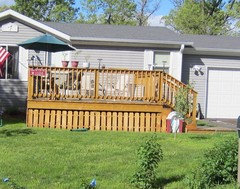



lucillleOriginal Author